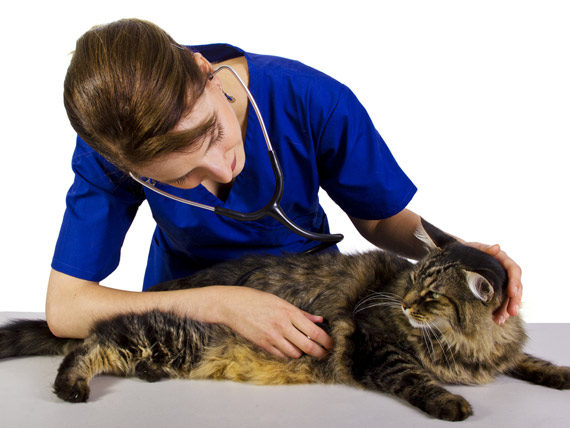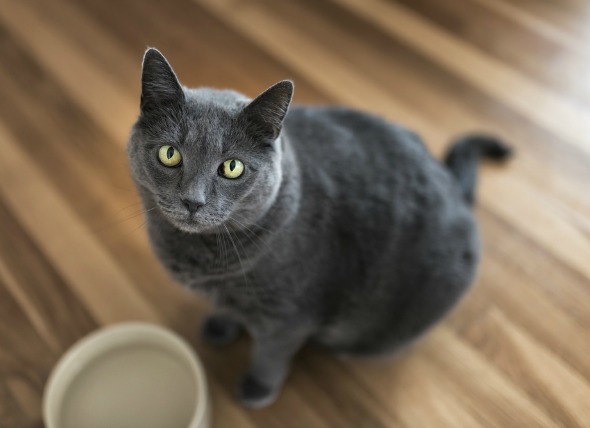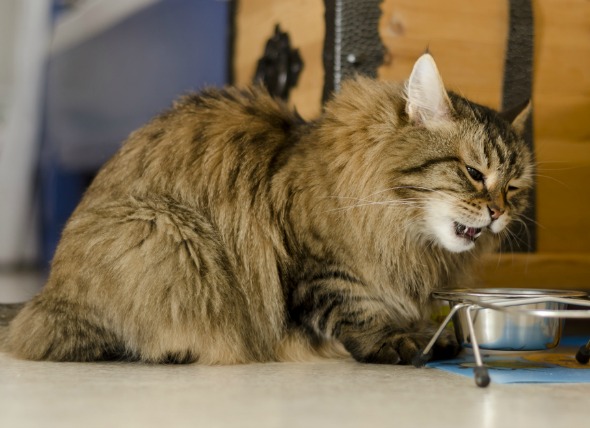

Infiltrative lipoma is an invasive, benign tumor composed of fatty tissue, a variant that does not metastasize (spread), but which is known to infiltrate the soft tissues, notably the muscles, but also including the fasciae (the soft tissue component of the connective tissue system), tendons, nerves, blood vessels, salivary glands, lymph nodes, joint capsules, and occasionally the bones. Muscle infiltration is often so extensive that surgery cannot be performed without severe consequences.
Infiltrative lipoma occurs much less frequently than does lipoma, and it is rare in cats. When it does occur, it is usually in middle-aged cats, and it tends to affect females more so than males. Otherwise, no breed predilection has been definitively demonstrated.
You will need to give a thorough history of your cat's health and onset of symptoms. Your veterinarian will use X-ray imaging to reveal the fat dense tissue between the soft tissue dense structures, and a computed tomography (CT) scan will help to discriminate the nature of the tumor so that your doctor can plan what type of radiation treatment would be best. However, differentiating normal fat from an infiltrative lipoma can be very complicated and problematic.
A sample of tumor cells may be taken by needle aspirate for laboratory analysis, and this may help your doctor to distinguish between normal adipose (fatty) tissue and a lipoma tumor. Lipoma tumors do have a distinctive feature in that they infiltrate muscles, so your doctor may be able to make a form diagnosis based on their behavior within the muscular structure.
The characteristic deep invasiveness of this tumor, along with the difficulty in distinguishing between the tumor and normal fatty tissue, makes removal extremely difficult. Poorly defined tumor margins, the edges of the tumor mass, may also contribute to the high recurrence rate after surgical excision has been performed. A high percentage of post operative patients suffer recurrence within 3–16 months, at a rate estimated at 36–50 percent. There is an exception, and that is when a tumor has been located in one of the limbs and the entire limb removed. However, amputation of an affected limb is recommended only when quality of life is affected, since these tumors cause little inconvenience unless they interfere with movement, cause pressure-related pain, or develop in a vitally important site, such as a major blood vessel.
Amputation is also recommended before growth of the tumor can cross an attainable surgical margin.
Your veterinarian will schedule re-evaluations as dictated by the tumor growth, and the choice of therapy for controlling the growth.
 Acetominophen (Tylenol) Poisoning in Cats
Acetaminophen Toxicity in Cats
Acetaminophen is o
Acetominophen (Tylenol) Poisoning in Cats
Acetaminophen Toxicity in Cats
Acetaminophen is o
 Inability to Urinate in Cats
Functional Urinary Retention in Cats
Urinary rete
Inability to Urinate in Cats
Functional Urinary Retention in Cats
Urinary rete
 Salmonella Infection in Cats
Salmonellosis in Cats
Salmonellosis is an infecti
Salmonella Infection in Cats
Salmonellosis in Cats
Salmonellosis is an infecti
 Cushing's Disease in Cats
Hyperadrenocorticism in Cats
Cushing’s synd
Cushing's Disease in Cats
Hyperadrenocorticism in Cats
Cushing’s synd
 Swallowing Difficulties in Cats
Dysphagia in Cats
There are a number of condition
Swallowing Difficulties in Cats
Dysphagia in Cats
There are a number of condition
Copyright © 2005-2016 Pet Information All Rights Reserved
Contact us: www162date@outlook.com